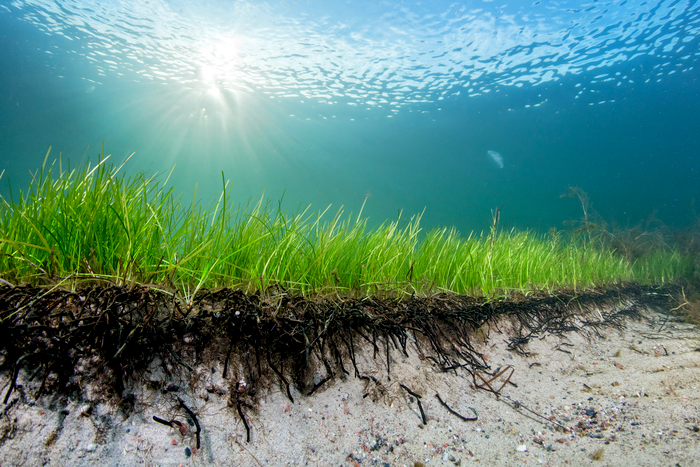
Seagrass can protect against coastal erosion
Coastal erosion due to storms is a global problem which is often solved by replenishing the coast and beaches with new sand in places where storms wreak the greatest havoc. However, a new study led by the University of Gothenburg has found that another solution is to utilize nature’s own defenses against this phenomenon. According to the experts, seagrass can reduce cliff erosion by up to 70 percent due to its root mats binding the sand.
In southern Sweden, 12 percent of Skåne’s coastline is vulnerable to rising rates of coastal erosion. In other countries, such as the Netherlands, this is an even bigger issue, and the coastline needs to be protected through the construction of dikes made from stone and mud. To assess the importance of seagrass as a natural defense mechanism against erosion, the scientists took samples of sandy sediments with and without common eelgrass – a seagrass species that grows along Sweden’s coasts – and placed them in a large tank capable of simulating waves.
The experiments revealed that the sand was eroded far less by waves when seagrass was growing in it. Although the effect of the seagrass in muddy seabeds was found to be less pronounced, fortunately, such seabeds are most common in fjords and other areas that are less exposed to waves.
“We have seen that seagrass meadows in the coast are valuable assets in mitigating erosion. We already know that their long canopies serve as breakwaters, but now we can show that their root mats also bind together the underwater sand dunes, effectively reinforcing them,” explained study lead author Eduardo Infantes, a marine biologist at the University of Gothenburg.
“This is why it is even more important to preserve those seagrass meadows that still exist today and to replant seagrass in those places where it has disappeared. In our research, we have made successful attempts to restore common eelgrass meadows on the Swedish west coast, but if such replanting efforts are to succeed, there is a need for detailed studies of the current status seabed environment.”
In future research, the scientists aim to move out of the laboratory environment and measure sand erosion on an exposed shoreline along the coast. Other factors such as currents, traffic on the water, or inflows from rivers will be assessed as possible contributors to erosion.
“It’s more complicated in the field, but we have created realistic storm waves in our experiments and the seagrass has clearly shown a protective effect against erosion. I think we will be able to demonstrate the similar effects in field tests,” Infantes concluded.
The study is published in the journal Marine Ecology Progress Series.
—
By Andrei Ionescu, Earth.com Staff Writer
Image Credit: : Pekka Tuuri
Check us out on EarthSnap, a free app brought to you by Eric Ralls and Earth.com.












